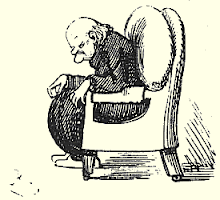If you're struggling with what to get me for Hanukkah (I suppose former follower 191 won't be getting me anything-- hmpf) I proffer, with great humility and anticipatory thanks, the Complete Series of "Homicide: Life on the Street."
$112.49 on Amazon-- free Super Saver shipping. Noice.
I watched "Homicide," the truly excellent series detailing the struggles, heartaches, frustrations, failings and transcendence of the Homicide detective's squad of the Baltimore City police department. A year out of college, I took the ferry with two friends to Fells Point, where much of Homicide was filmed. It's hard to forget grainy, handheld images of Richard Belzer and Andre Braugher tooling around the bumpy, pothole-stricken streets in their incongruous white Chevy Cavalier-- for some reason the auto of choice for B-more detectives in the 1980s-- beating down the doors and following the scents of some of the most disgusting, shameless and brutal murderers Baltimore had to offer.
And it doesn't get much better than an earthy, poignant, if somewhat challenging to understand monologue from Yaphet Kotto-- one of the acting titans who always looks just right with a badge pinned to his blazer pocket and a .38 on his hip. If I were killed, I'd probably rather Yaphet Kotto investigate my murder than any real detective.
It was only recently, though, whilst bumming around Borders actually looking at books, which is something I don't think people really do anymore (I used to go to Borders looking at/for women, but I'm married now, thank you) that I found the book that started it all: "Homicide: A Year on the Killing Streets" by veteran reporter and writer David Simon, who went on to create "The Wire" which has officially been seen by everybody, including a 16-year-old student of mine with Aspergers, but me.
(You can buy that for me for Hanukkah next year.)
David Simon, for one year, was dubbed "Police Intern" and was given unfettered, unprecedented access to Baltimore's Homicide squad, to see, hear, record, and report on everything-- from its widow's peaks to its beer-bellies to its pimples. And there's many of each to go around. But, underneath the swearing, the frustrating, endless pursuits, the mindfucking that goes on in the interrogation room, the combativeness and competition between detectives, the personalities, there is the quiet diligence, the ruthlessness, the devotion to the job that shines through on each page. Detectives who will spend hours on their hands and knees, sifting through leaves in trash-strewn alleyways for a shell casing, who will zero in on a suspect and who will not yield until every investigative avenue, theory, story, possibility and improbability is pursued to the hilt.
Yes, sometimes, when it is 98 degrees in the squadroom, they take off their pants and lay down on top of other detectives who are passed out on the couch. They sexually harrass the elderly cleaning lady. They fuck with each other endlessly. The humor is almost all profane and morbid-- it is easy to joke over a dead body. A head wound is described on page one as "a slow leak." A nurse describes a deceased gentleman to a detective as "A-D-A-S-T-W."
"Arrived Dead And Stayed That Way."
What else can you do but laugh?
The suspects, in inner-city Baltimore, usually young, black men, are referred to as "yo's." Their girlfriends, yoettes. Easy cases are "dunkers." The detectives refer to each other as "bunk." A detectives purchases his supervisor an egg sandwich on a bagel. The supervisor asks what he owes the detective.
"That's okay, bunk. I'll get you next time."
An eleven-year-old girl is brutally sexually assaulted and murdered-- it's never solved. A young police officer gets shot twice in the head and is blinded for life. It's revealed through a barroom conversation with a young female juror after it's all said and done that it's only through a miracle that the jury deigns to find the shooter guilty and sentence him appropriately.
"It's Memorial Day weekend," she told the officers stunned coworkers after the trial, "everybody pretty much just wanted to go home."
After he was shot and was recovering from brain surgery in the hospital, Gene Cassidy, the young officer freshly blinded, wandered into another patient's room in the middle of the night. Lying in bed was a fourteen-year-old child recovering from a car accident. Cassidy, gowned and bandaged and blind, shuffled over to the kid and said, "You're under arrest." The child advised the officer to go back to bed. Cassidy said, "Okay," and wandered down the hallway.
Ghosts and apparitions weave in and out of "Homicide" and mix amongst the living-- bodies, stories, detectives, survivors, families, lawyers. Through it all, there is humility, humanity, and humor.
Edgerton and Pellegrini come up against two Dobermans.
"Go on, Tom," says Edgerton, laughing. "You can take 'em."
"No, that's all right."
"They're just animals. You're a man with a gun."
Pellegrini smiles.
"Go on. Show 'em your badge."
"I think we can wait," says Pellegrini, walking back to the car.
But they never wait long. In a world where "I didn't see nothin'" is the phrase these detectives are confronted with most frequently, they're always there, chasing down impossible leads and making sure some people know that they definitely saw something. Edgerton reminded a young uniformed officer of that one day when he singlehandedly chased a suspect and tossed him for information. The young officer expressed surprise that a homicide detective would go after someone alone like that.
"You only got six bullets," the uniform said.
"I don't even have that," Edgerton laughed. "I forgot my gun."
"YOU WHAT?"
"Yeah. I left my gun in my desk. This job is ninety precent attitude."
Lauren Soloy’s The Newest Gnome: A Quiet Adventure
8 months ago














No comments:
Post a Comment
Got something to say? Rock on with your badass apron!